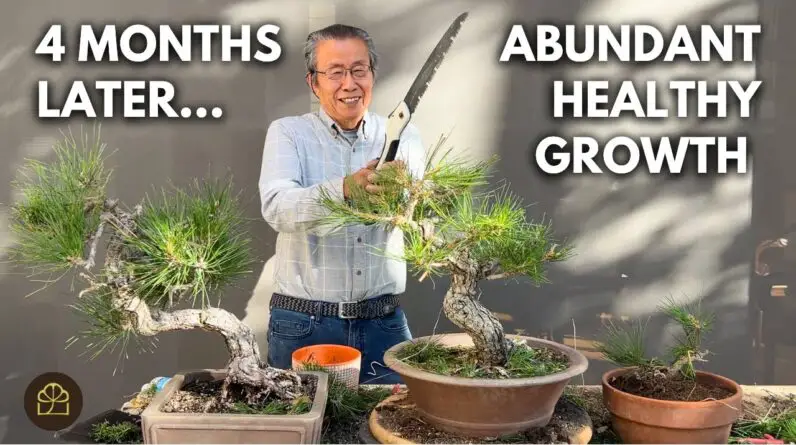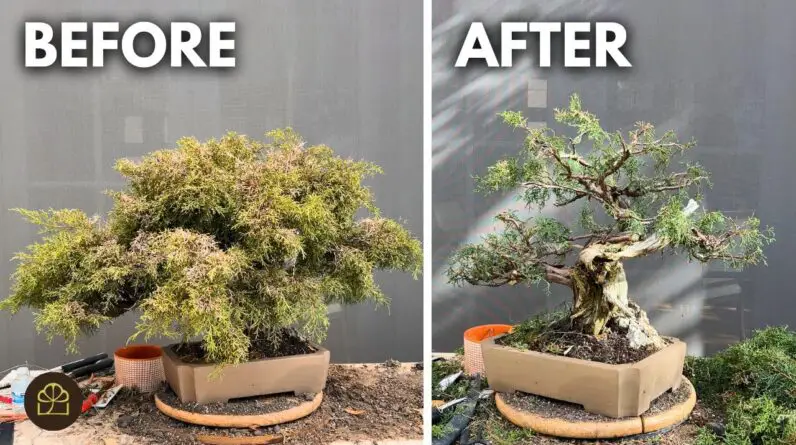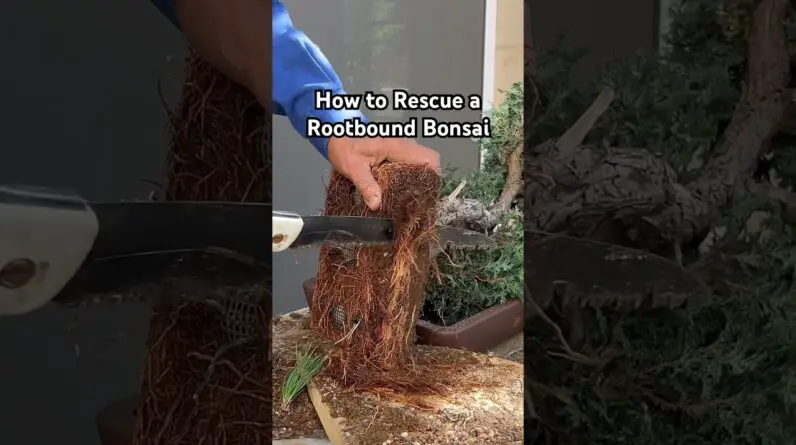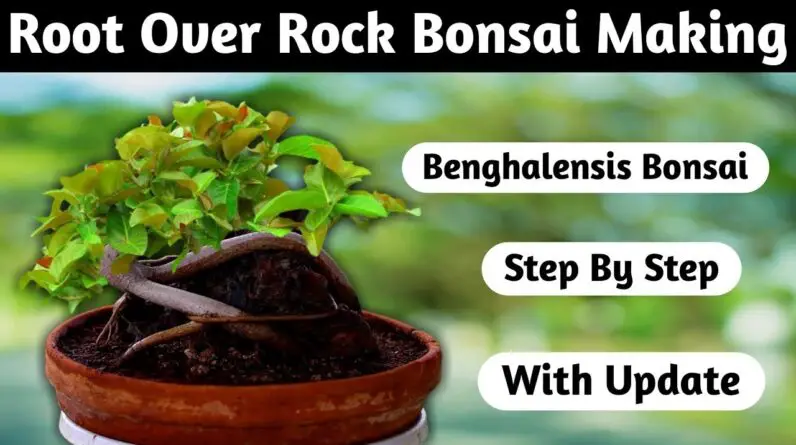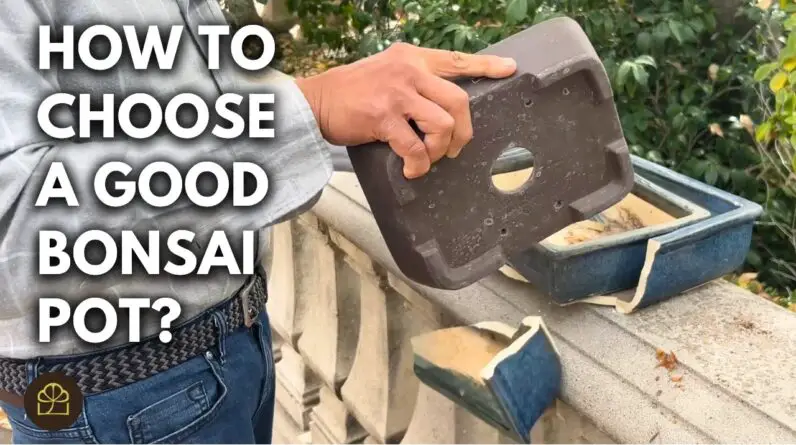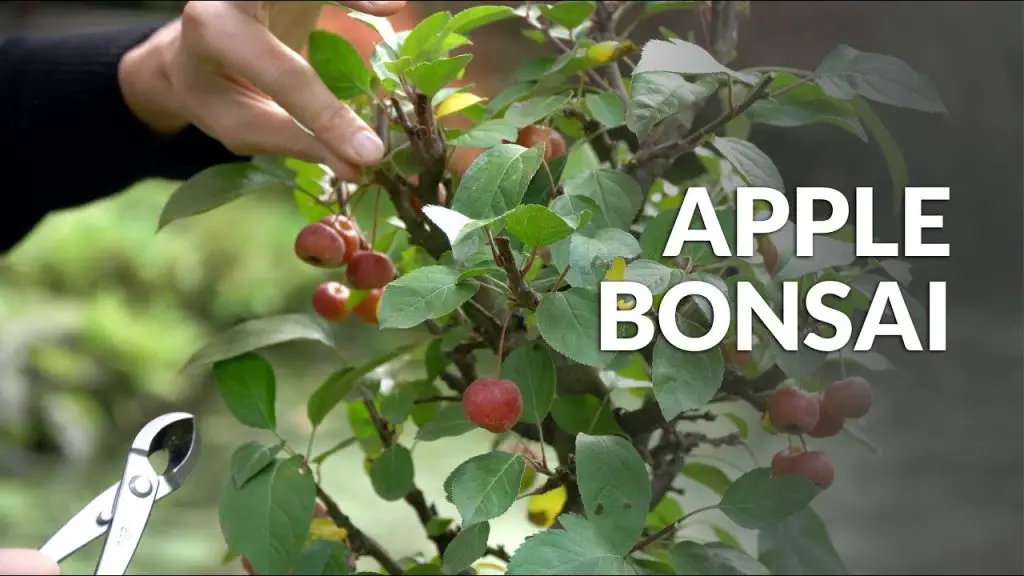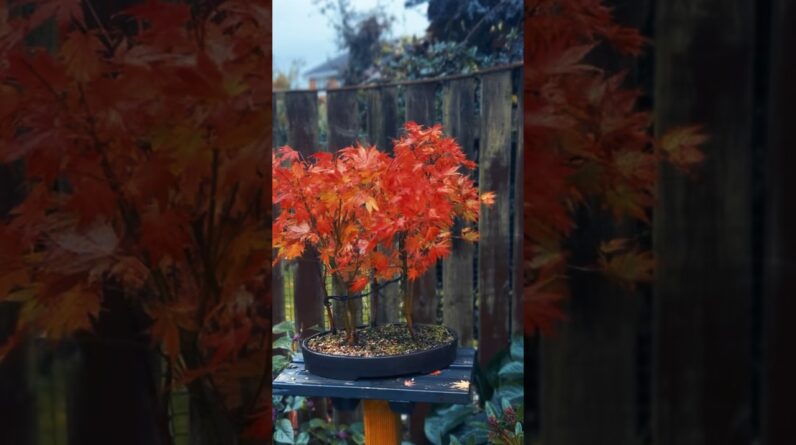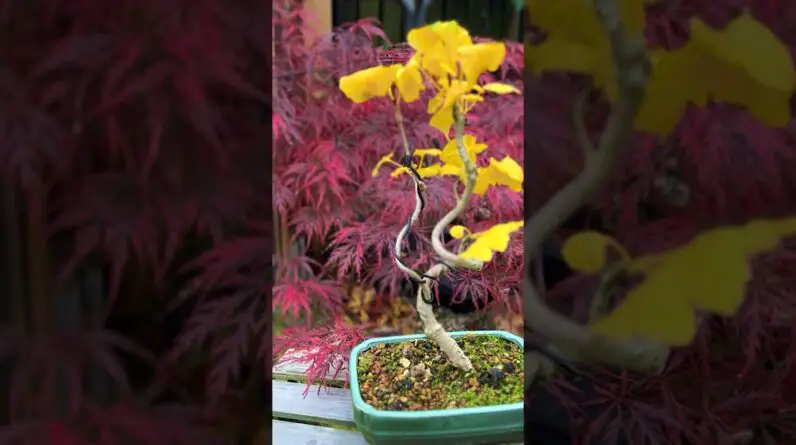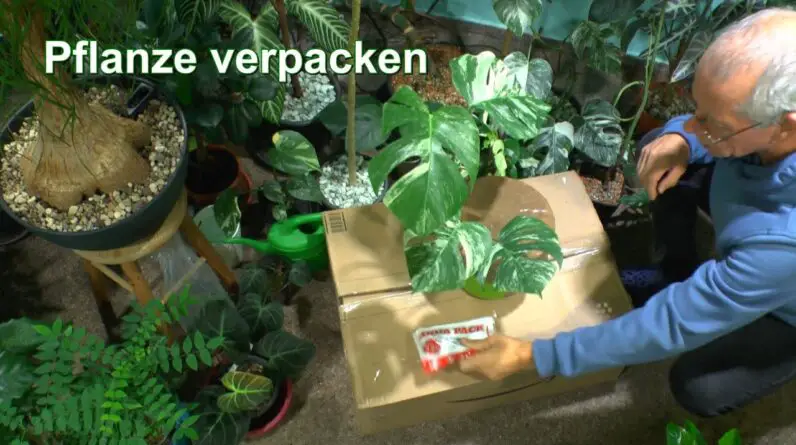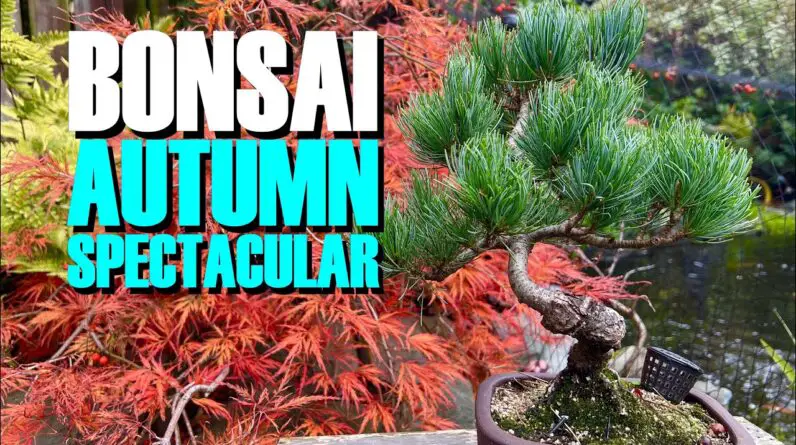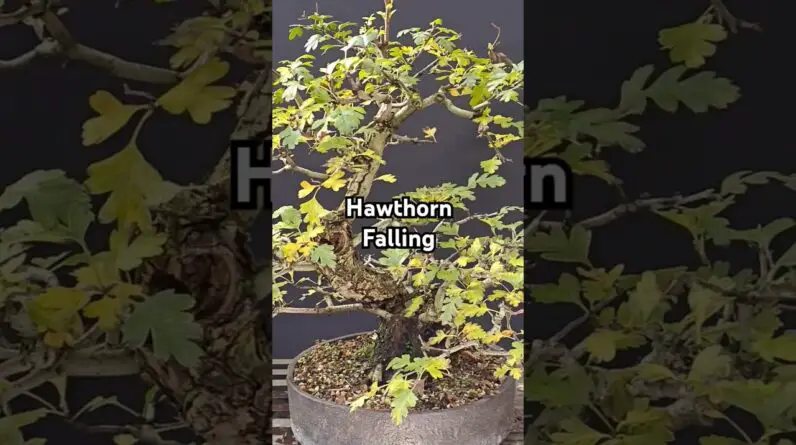Intend to find out exactly how to make an Apple bonsai tree? In this video by Bonsai Empire, they reveal you exactly how to prune and wire an Apple tree that is around 15 years of ages. The video clip was recorded during fall, when the tree was loaded with little apple trees.
Bonsai Empire is passionate about sharing the living art of Bonsai and produced this DIY tutorial to assist and motivate novices. This video becomes part of their on-line programs, but they offer numerous various other complimentary video clips as well.
So if you’re interested in learning more regarding Bonsai methods, head over to Bonsai Realm’s internet site!
In the video clip, they discuss the procedure of pruning and circuitry this Apple bonsai tree. They make use of tiny trimming shears, pliers, and cable cutters. The top branch is the first to be cut, and after that they focus on 2 thicker branches to achieve the desired shape.
They show the relevance of a 360-degree method when cutting and circuitry to stay clear of any dead angles. After the trimming and wiring, the tree looks extra polished and balanced. With regular upkeep, this tree will certainly continue to flourish and expand new branches in the upcoming spring. If you want to discover more concerning trimming, wiring, and repotting methods, think about joining Bonsai Empire’s on-line training courses and gain access to expert support and the chance to ask the trainers questions straight.
Apple Bonsai Tree: An Introduction
Welcome to the globe of apple bonsai trees! Creating and growing a small apple tree can be a fulfilling and satisfying leisure activity. Not just do these bonsai trees offer a gorgeous aesthetic, yet they also use the opportunity to expand your own fruits in a small and convenient space.
In this detailed article, we will direct you via the procedure of choosing the appropriate apple tree range, collecting the required products, growing the tree from seeds, trimming and circuitry strategies, appropriate upkeep, potting factors to consider, and the differences in between outdoor and indoor apple bonsai trees.
Take into consideration the Size of the Bonsai
When picking an apple tree selection for bonsai farming, it is necessary to think about the supreme dimension of the tree. Given that bonsai trees are implied to be miniature variations of their bigger equivalents, picking a selection that naturally stays tiny is vital. Try to find apple tree varieties that are understood for their small development and smaller sized stature, such as columnar apple trees or normally dwarf varieties. This will certainly guarantee that your bonsai continues to be symmetrical and is much easier to manage.
Pick a Crab Apple Tree Selection
Crab apple trees, with their tiny and dynamic fruits, are typically the preferred selection for apple bonsai cultivation. These trees naturally have more delicate and symmetrical functions, making them well-suited for bonsai appearance. Furthermore, crab apple trees are hardy and versatile, making them much easier to take care of and preserve as bonsai specimens. Consider selections such as Malus sylvestris or Malus floribunda, which are commonly used in bonsai growing.
Take into consideration the Climate and Location
Before picking the apple tree range for your bonsai, it is necessary to take into consideration the environment and location where you plan to grow it. Different apple tree varieties thrive in different climates, so select a range that is fit to your particular region. In addition, remember the quantity of sunshine and temperature level needs of the chosen range. Most apple trees require full sun to grow, so make sure that your selected area supplies sufficient sunlight throughout the day.
Select an Ideal Bonsai Pot
Choosing the right bonsai pot is crucial for the health and aesthetics of your apple bonsai tree. Try to find a pot that is in proportion to the size of your tree and enhances its overall design. Bonsai pots are available in different products such as ceramic, plastic, or clay. Each product has its own advantages and considerations, so pick one that suits your personal preferences and the specific demands of your apple bonsai tree.
Obtain Quality Bonsai Dirt
High-quality bonsai soil is crucial for the healthy and balanced growth of your apple bonsai tree. The soil must supply ample drainage while preserving enough moisture for the tree’s origins. You can acquire pre-made bonsai soil mixes that are especially made for bonsai farming, or you can produce your very own mix by integrating elements such as Akadama, pumice, and lava rock. Trial and error with different dirt blends might be required to locate the ideal balance for your apple bonsai tree.
Get Trimming and Electrical Wiring Tools
Pruning and wiring are vital methods for shaping and keeping the type of your apple bonsai tree. To successfully prune and wire your bonsai, you will require a collection of proper devices. Some crucial devices include a concave branch cutter for exact pruning, bonsai cable cutters for taking care of the wire, and pliers or tweezers for elaborate work. Invest in top quality devices to ensure accuracy and reduce damages to your apple bonsai tree.
Collecting Apple Seeds
Among one of the most gratifying ways to begin an apple bonsai tree is by expanding it from seeds. You can gather apple seeds from ripe fruits or acquire them from respectable providers. Guarantee that the seeds are fresh and sensible for the best chances of germination.
Preparation of Seeds for Growing
Prior to growing the apple seeds, it is very important to prepare them for ideal germination. Beginning by soaking the seeds in water for 24 hours to soften the external seed coat. After soaking, remove the seeds from the water and enable them to completely dry for a few days. This procedure assists damage the seed’s dormancy and boosts the chances of effective germination.
Planting and Germination Process
As soon as the seeds are prepared, plant them in small pots full of well-draining bonsai soil. Place the pots in a cozy and warm area, and maintain the dirt continually moist. Germination generally takes about two to four weeks, depending upon the range and ecological conditions. Once the plants have actually grown, pick the healthiest ones to proceed growing as your future apple bonsai trees.
Recognizing Pruning Methods
Pruning is a vital facet of bonsai cultivation that helps maintain the tree’s size, form, and general aesthetic appeals. By uniquely getting rid of branches and foliage, you can attain the preferred form and balance. Learn more about various trimming strategies such as maintenance trimming, branch pruning, and pinching to preserve the wellness and form of your apple bonsai tree.
Recognizing the Right Branches to Trim
When pruning your apple bonsai tree, it’s important to identify the branches that need to be trimmed. Seek branches that interfere with the preferred type or hinder the tree’s overall balance. Remove any dead, harmed, or undesirable branches to promote healthy development and protect against illness. Get in touch with bonsai sources or look for support from experienced bonsai lovers if you’re unsure which branches to prune.
Pruning to Achieve Preferred Shape
Trimming is not just regarding upkeep but likewise concerning forming your apple bonsai tree. Use pruning methods to direct the tree’s growth and attain the desired shape and style. Think about standard bonsai shapes such as official upright, inclining, or waterfall, and adjust them to match the qualities of your apple bonsai tree.
Preparing the Tree for Circuitry
Electrical wiring is another necessary strategy in bonsai farming that helps create and keep the desired shape and structure of your apple bonsai tree. Before using cables, ensure that the branches and trunk are flexible adequate to be adjusted without triggering damage. Younger branches are much more adaptable and easier to wire, while older branches may need steady bending gradually.
Selecting the Right Cord Dimension
Selecting the ideal wire dimension is essential to stay clear of harming the branches of your apple bonsai tree. The wire ought to be strong enough to hold the preferred shape without cutting into the bark. Pick a cable dimension that is around one-third of the density of the branch being wired. Copper or light weight aluminum cable is generally made use of, yet see to it it is soft enough to be conveniently formed.
Using Circuitry Methods
To wire your apple bonsai tree, begin by wrapping the wire at the base of the branch or trunk and afterwards delicately spiral it upwards, making certain to keep a 45-degree angle between the cable and the branch. Be careful not to cover the cable also tightly, as it can limit the tree’s flow and create damages. When the desired form is accomplished, secure the cord by turning the ends together or utilizing wire clips. Eliminate the wire after a few months to avoid it from cutting into the bark.
Watering and Wetness Control
Proper watering is important for the health and wellness and vitality of your apple bonsai tree. The regularity and amount of water required depend upon numerous factors such as the climate, pot size, and tree’s growth stage. Water your apple bonsai tree when the top inch of soil feels completely dry, guaranteeing that the water reaches the whole origin system. Avoid overwatering, as it can result in root rot and various other fungal diseases.
Feeding and Nutrient Needs
Preserving dirt fertility is crucial for the healthy growth of your apple bonsai tree. Use a well balanced fertilizer during the growing period to give the essential nutrients for ideal development. Use organic or slow-release plant foods specifically created for bonsai trees, following the suggested dose directions. Routinely check the tree’s reaction to fertilization and change the feeding routine appropriately.
Pest and Condition Management
Like any other plant, apple bonsai trees can be prone to various bugs and illness. Routinely check your tree for signs of infestation, such as stained leaves, insects, or unusual growth. If any kind of concerns are spotted, without delay take proper steps to control and eliminate the issue. Take into consideration making use of organic bug control techniques or consult with professionals if needed.
Repotting Regularity and Timing
Repotting is an important task in bonsai cultivation that enables root system wellness and total development control. The regularity and timing of repotting depend upon various factors such as the age and development price of the apple bonsai tree. As a basic standard, repotting is typically done every two to three years, preferably throughout the early spring prior to the tree starts actively expanding.
Choosing a Proper Bonsai Pot
When repotting your apple bonsai tree, choose a brand-new pot that is slightly larger than the present one. Consider the visual appeals and overall balance of the tree when choosing the pot’s shape and style. Make sure that the pot gives ample drain holes and is made from a product that is suitable for bonsai growing.
Transplanting and Root Pruning
During repotting, very carefully get rid of the tree from its existing pot and delicately loosen the origin round. Check the roots and cut any kind of damaged or excessively lengthy roots. This procedure, called root pruning, aids stimulate new root growth and maintains the tree’s origin system small. After origin pruning, put the tree in the new pot, ensuring that the origins are equally dispersed and covered with fresh bonsai soil.
Appropriate Potting Methods
When potting your apple bonsai tree, usage proper techniques to guarantee its security and healthy and balanced development. Position the tree a little off-center in the pot to produce a feeling of movement and equilibrium. Secure the tree in position making use of bonsai cables or rocks, and fill up the remaining area in the pot with bonsai dirt, ensuring that no air pockets are left. Water the freshly potted tree thoroughly and monitor its healing during the complying with weeks.
Advantages and Considerations for Outdoor Bonsai
Expanding an outdoor apple bonsai tree enables it to experience the all-natural transforming seasons, which can enhance its overall beauty. Outdoor bonsai trees generally have more space to grow and develop a stronger root system. However, outdoor bonsai trees require careful consideration of climate and weather conditions, protection from extreme temperature fluctuations, and regular exposure to sunlight.
Benefits and Challenges of Indoor Bonsai
Growing an apple bonsai tree indoors provides more controlled conditions and allows enthusiasts in colder climates to enjoy bonsai cultivation year-round. Indoor bonsai trees require careful attention to temperature, humidity, and lighting conditions. Supplemental lighting may be necessary, especially during the winter months when sunlight exposure is limited. Additionally, indoor bonsai trees may require more vigilant pest and disease management due to the controlled environment.
Creating and caring for an apple bonsai tree is a rewarding and fulfilling endeavor. With proper knowledge and techniques, you can enjoy the beauty of nature in a miniature form and even grow your own miniature apples.
By choosing the right variety, gathering the necessary materials, mastering pruning and wiring techniques, maintaining proper care, and selecting the right pot and location, you can cultivate a stunning apple bonsai tree that brings joy and tranquility to your surroundings.
Happy bonsai cultivation!
[sspostsincat category=”Apple Bonsai”]


